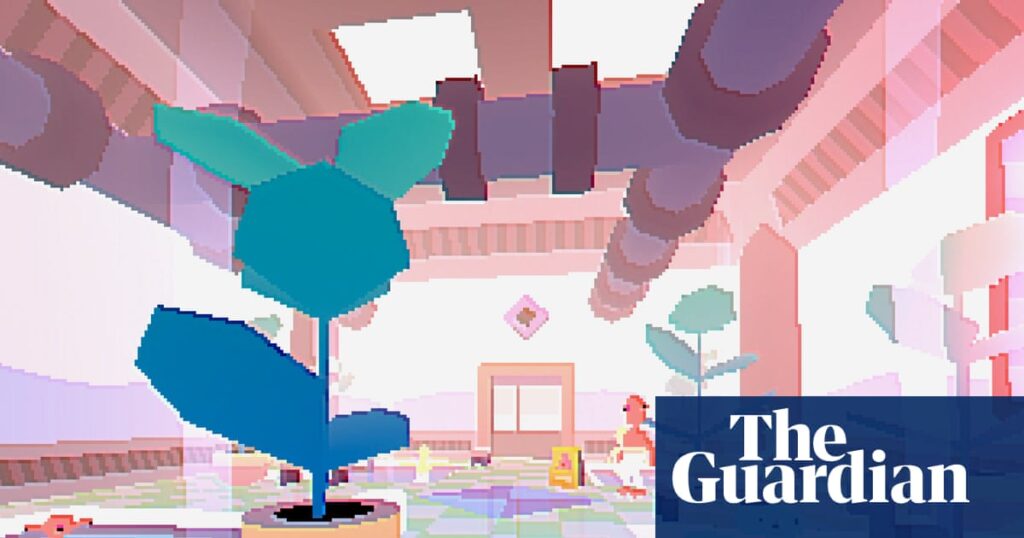Here is poetry in the form of a game description. Bernband is “a sci-fi exploration game for people who like to wander…”. Players will be able to simply walk around a colourful and unusual world, wandering in the glow cast by streetlights and ducking beneath zigzagging overhead flags. They’ll tour hallways where strange green life grows politely in planters, and they’ll even get the chance to snooze on rattling otherworldly subway trains while hand grips – tentacle grips? – jiggle as they hang overhead. “There’s no goal but to stroll,” the game’s Steam page promises. “Where will your feet take you?”
There’s something intoxicating about a game that just lets you wander. But it doesn’t mean the game itself is easy to make, of course. “Wandering [as] the main goal is quite difficult for many reasons,” says Tom van den Boogaart, the developer of Bernband, who is using the project to reimagine a much smaller version he made in 2014. “To let players explore on their own, I think you first of all need to give them some context, such as where they are and what kind of world they are exploring.”
As a result, every wander through Bernband begins in the same way: in a small apartment with a window that offers a glimpse of the strange universe the game inhabits. “The idea is to communicate that you are someone who’s living in this city,” Van den Boogaart says. “And that over time it will start to feel familiar. It’s clear that your journey starts when you walk out of there through the door.” The apartment also serves as a place that players can return to after exploring the city. “It creates the minor goal of, ‘can I find my way back to my apartment?’. Perhaps even if it’s just something subconscious.”
Van den Boogart quickly learned that a wandering game also needs to give players a number of places to head for at any time. As a result, most of the world of Bernband is set up in a nonlinear manner. “Most of the time there are multiple ways to reach a location,” he says, “of which some are a bit more hidden or obscure than others. When exploration is the main goal of the game, you want to give players the choice of what to explore. Even if it’s as simple as going left or right at a crossing.”
With a design this unobtrusive, Van den Boogaart admits it’s been a constant battle not to gamify things a little, whether that’s adding a map that shows players places they’ve already been to or a checklist for them to complete as they walk. He has resisted, however. “I believe that having access to information like this takes away the magical feeling of stumbling upon a secret area,” he laughs. “You would already in some way know that it exists.”
Bernband’s alien city is not a traditional open world, but instead consists of discrete areas that are linked by elevators and other transportation methods. The approach was chosen to allow players to focus completely on specific parts of a bigger place, all of which turn out to have their own personalities and flavours. In turn, Van den Boogaart works from a list of locations that he thinks would be fun or interesting. To keep himself creative, he ensures this list is fairly vague: big supermarket, shady bar, swimming pool with water slide.
And while it’s an alien world, Bernband is inspired by places that Van den Boogaart knows in real life, whether that’s his home town of Gouda in the Netherlands or the places the games industry tends to orbit,such as Tokyo, San Francisco and Stockholm.
“When making a game, I prefer to draw inspiration from personal memories and experiences instead of other media such as games or film,” he says. “It helps me to build a deeper and more personal connection with my work, and I hope that in the end this also gives the game and the world a unique feel.”

